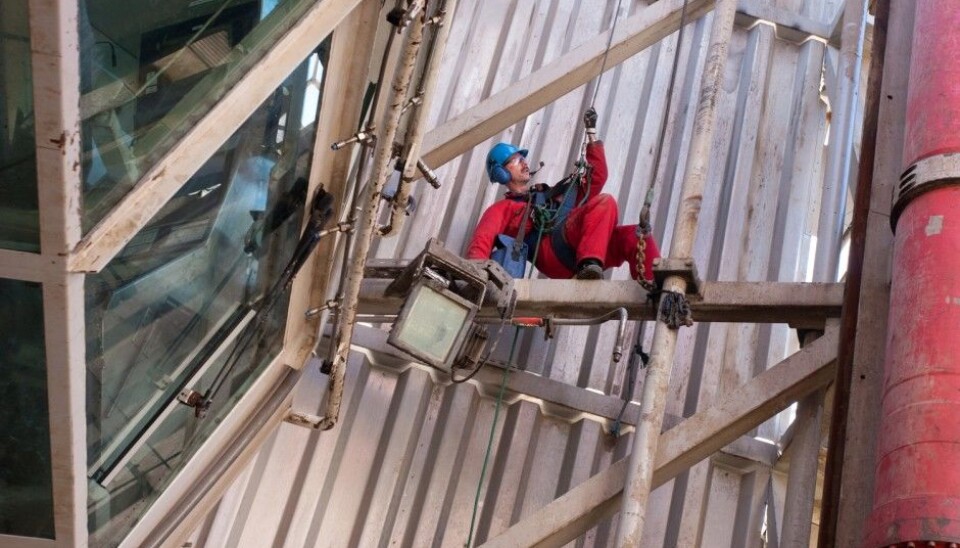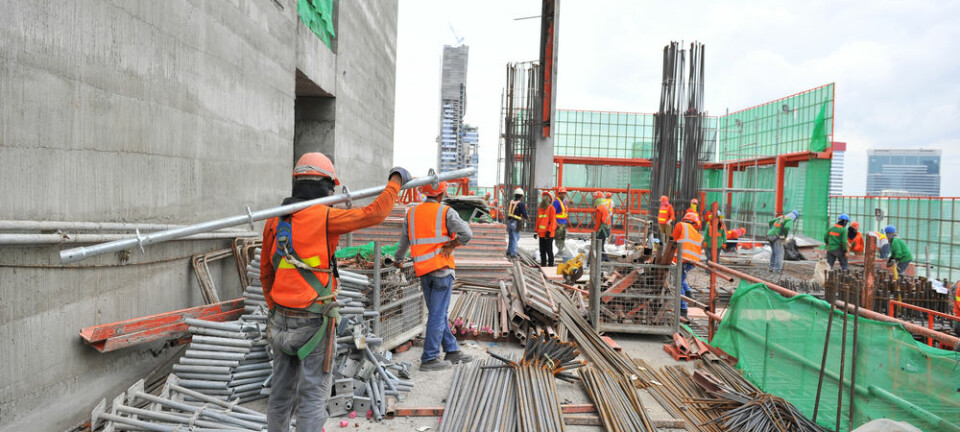
It pays to create better working conditions
Workplace stress is to blame for a lot of absenteeism. Repetitive tasks are the biggest problem, according to employees. But the job is less of a factor than they claim.
Work is healthy, even when you’re sick, research says. But it is only healthy if people have healthy working conditions.
And there is still quite a way to go when it comes to improving the work environment, says Pål Molander, institute director at STAMI, The National Institute of Occupational Health in Oslo.
Companies don’t do enough
“Few companies know how to provide a better work environment,” Molander said at a recent STAMI breakfast lecture. But he thinks we already know a lot about what creates a good work environment.
What is lacking are small and medium-sized enterprises’ input into research and a focus on implementing measures to improve the work environment, although he believes Norwegian industry has done a lot.
“Cake at work doesn’t cut it,” said Molander. It's more about the work content and organization, and how it is adapted to each individual.
Sick pay costs billions
Workplace absenteeism costs Norwegian society billions. In 2010 alone, the state paid out NOK 65 billion in sick pay. Research suggests that this amount could be significantly reduced if more businesses would implement more and better preventive measures.
The causes of sickness are complex, but work conditions are among those we can influence.
Exposure to hazardous substances in the manufacturing sector no longer constitutes the greatest risk factor for sick leave. Nowadays, we are exposed to more diffuse stresses.
And although nine out of ten people in Norway report that they enjoy their work, according to an article in Fagbladet, “it's not necessarily the case that job satisfaction and job involvement are associated with risk,” says Molander. “Fishermen are among those who love their work the most, yet they have many occupational hazards, including a high risk of death compared to other professions.”
Workload exceeds work capacity
The pace of work is increasing in many industries, job requirements are changing, and productivity demands keep growing. But greater efficiency demands also increase the risk of employee illness.
“This means that preventing sickness caused by poor working conditions will become increasingly important in the future,” said Molander.
“The trigger for many people who go on sick leave is the point at which the workload becomes greater than an employee’s work capacity,” said Molander.
Stress is actually better than boredom on the job, but the crucial piece is to what degree employees are able to determine and influence their workday.
Research shows that employees who have control over their own workday rarely get sick.
Molander stresses that it is important for employees’ influence on their workday not to get lost in the shuffle when productivity demands increase.
Effect of psychosocial environment
Musculoskeletal disorders and mental illness are the two single biggest causes of sick leave and disability benefits.
Lower back pain and mental disorders each account for ten per cent of long-term sick leave. Almost half of these cases could be prevented through a better work environment.
Researchers think this is because more than half of spinal disorders are due to health stresses in the workplace, such as heavy or wrong lifting.
And they have also found that approximately one in four individuals who develop mental illness get it because of the psychosocial work environment. Many workers also end up with back pain and other musculoskeletal disorders due to the psychosocial conditions at work.
Companies could theoretically bring down sickness absenteeism from 20 per cent to 12 per cent by reducing physical stress and improving the psychosocial environment.
“The state could save billions by preventing this kind of damage to people’s health,” said Molander.
Repetitive tasks
Reducing the mechanical loads and organizing work duties better would be good preventive measures.
Employees cite repetitive tasks as the biggest problem. “A lot could be gained here by organizing tasks differently,” said Molander.
Another psychosocial stress is when employees have a poor relationship with their boss, which is not quite as easy to resolve. Studies show that unclear leaders can cause new employees to quit.
Exaggerating blame for illness on job
Forty per cent of Norwegian workers on sick leave report that their workplace is the cause of their absence from work.
However, research on self-reporting suggests that this figure is too high, mainly because people tend to attribute greater significance to external factors than exists when measured objectively, said Molander.
A conservative estimate suggests that workplace conditions are to blame for 20 per cent of sickness absence, according to SINTEF research.
Finding measures that work
Employers can prevent many of the factors that influence sickness absence by improving the physical and organizational workplace conditions.
Molander says the specific measures a company should implement will vary from company to company. Each company has to find out where the shoe pinches and figure out what will work for their situation.
And although the most hazardous industrial jobs have decreased, and the requirements for protective equipment and procedures have improved, some workers are still exposed to harmful chemical substances.
New substances and new processes are emerging at a rapid clip. According to Swedish research, even modern industrial 3D printers expose workers to dust. A lot of this can be harmful, says Molander, and so it is important to continue developing new knowledge.
Implement measures systematically
Molander stresses that random bursts of effort are no good. Preventive measures must be implemented systematically, over time.
Three things are key for preventive measures to be effective, he says. The measures must be:
- Needs tested
- Knowledge based
- Systematically introduced
Better working conditions are profitable
Few business leaders know how important the work environment is for both employee health and organizational productivity.
“A better work environment also leads to increased productivity in business, although some investments may cost a little at first,” Molander tells forskning.no.
Survey data from 300 companies in 15 countries show that every euro invested in improved working conditions more than doubles the return in profitability.
“It’s a myth that the cost of improving employee working conditions is expensive. If measures are needs tested, knowledge based and systematically introduced, new research shows that, on the contrary, this is very profitable,” says Molander.
“This puts employers and employees in the same boat,” he says. The business community is also interested in as many people as possible working to maintain their purchasing power.
But regardless of profitability, Molander stresses that employers are legally and ethically obligated to prioritize working conditions so people do not become ill from working.
Reference:
STAMI Breakfast Lecture: Fremtidens arbeidsliv - Hvorfor blir arbeidsmiljø enda viktigere?
[Future work life – Why are working conditions becoming even more important?] STAMI, 8 December 2016]
--------------------------------------
Read the Norwegian version of this article at forskning.no

































